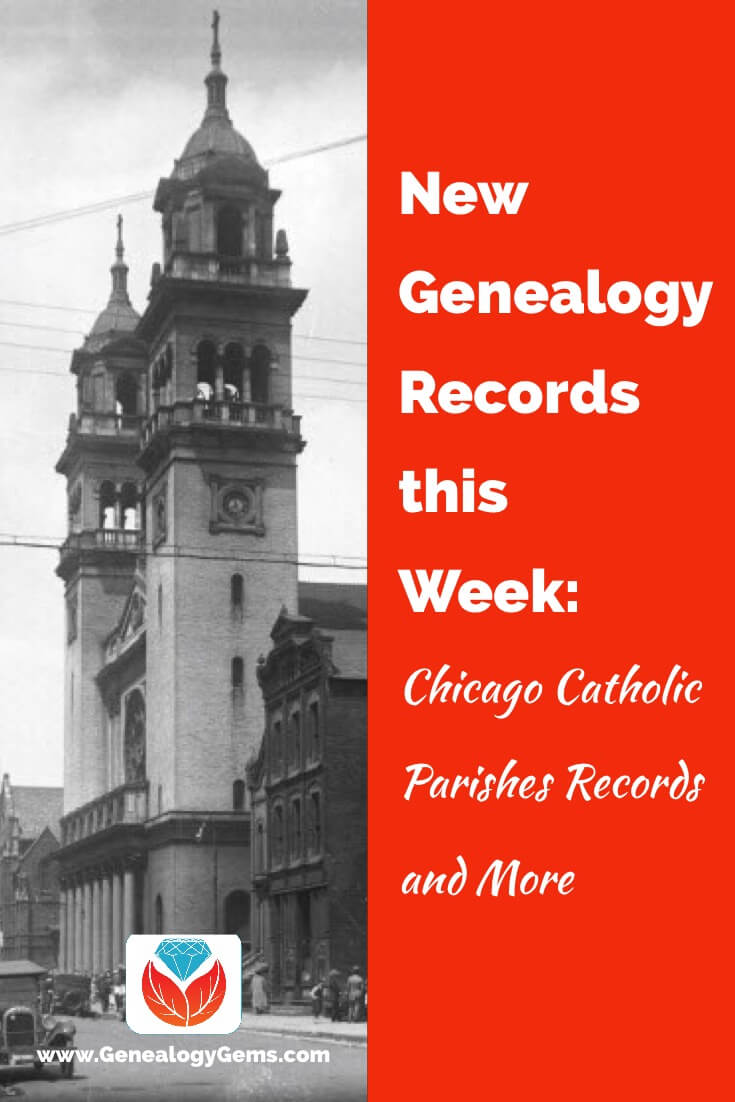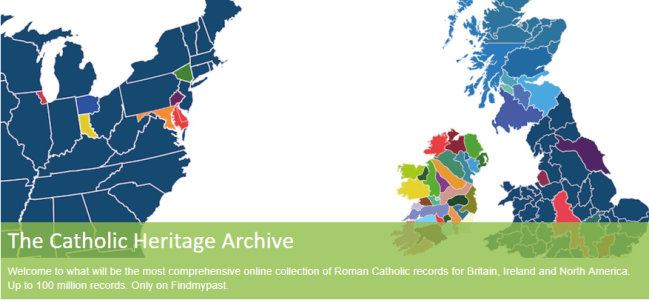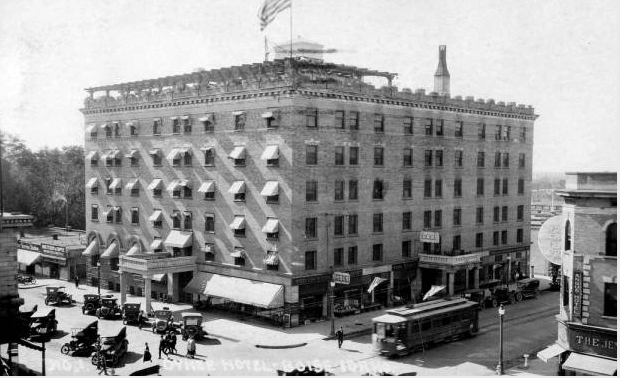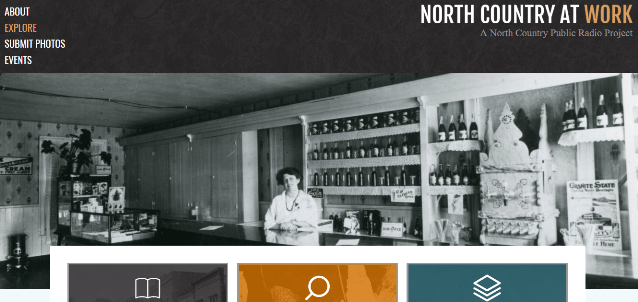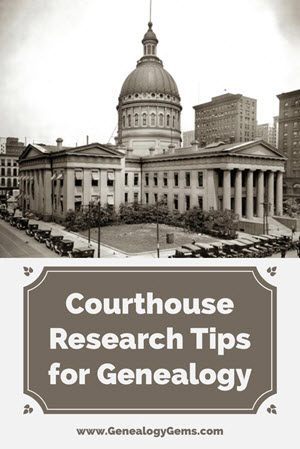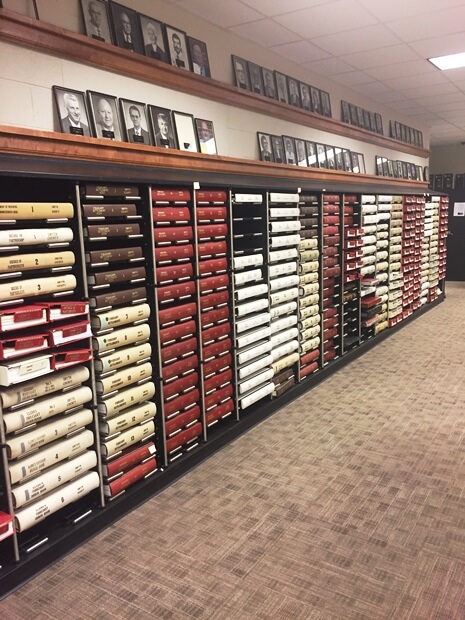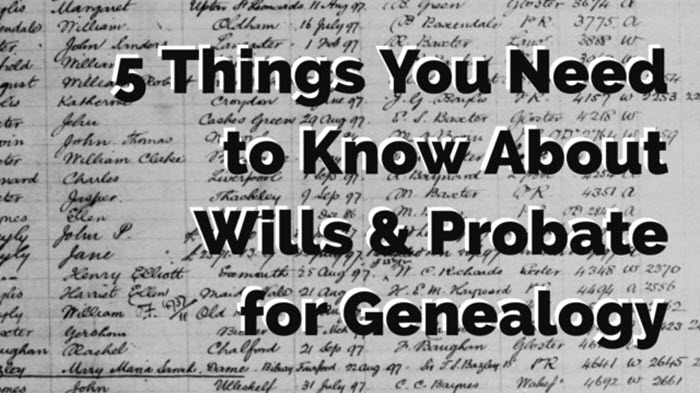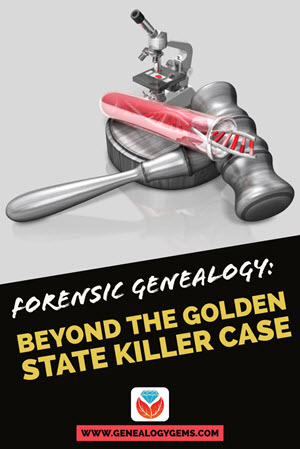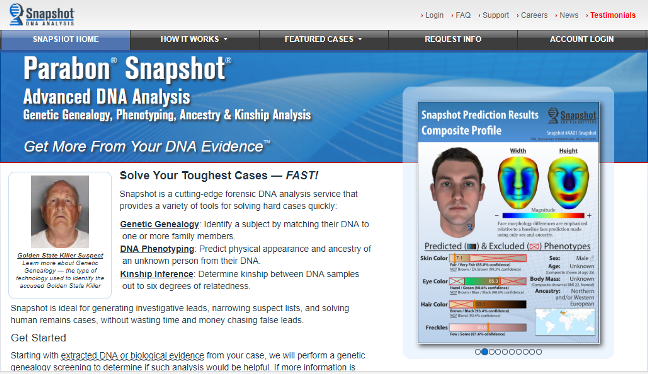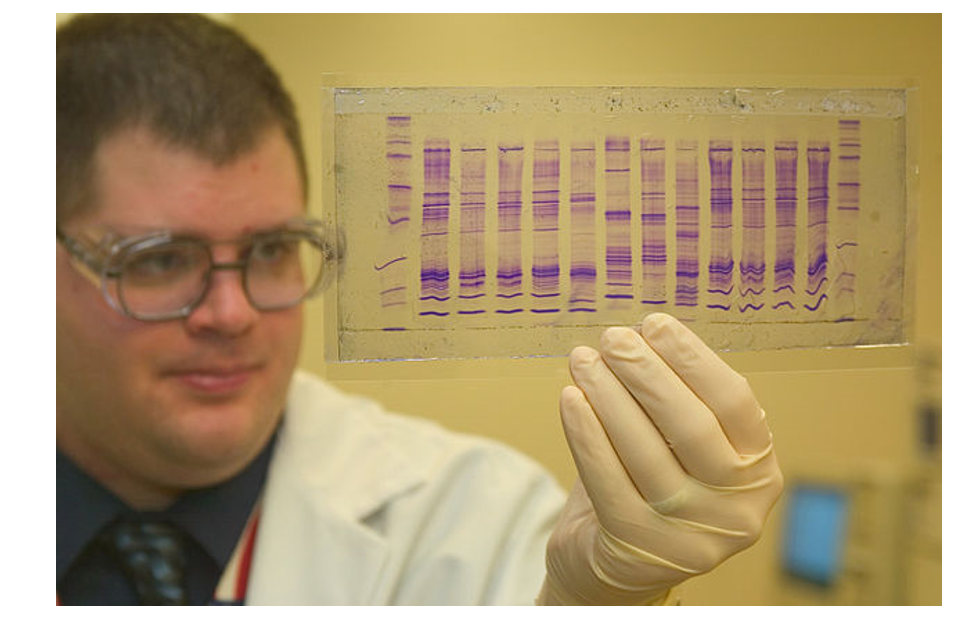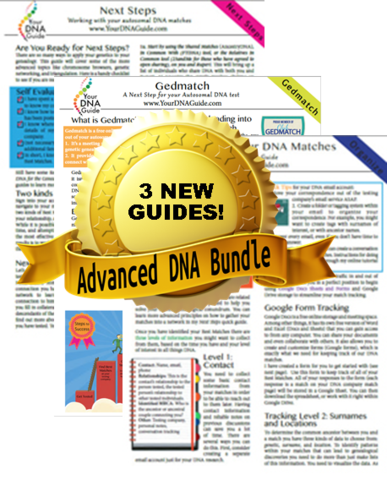Blog

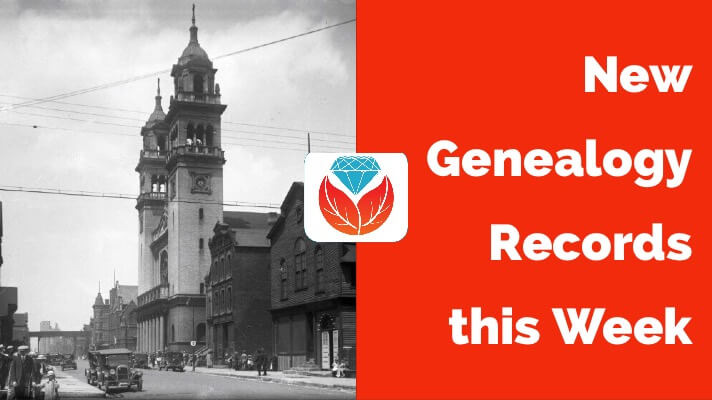
New Genealogy Records this Week: Chicago Catholic Parish Records and More
Chicago Catholic parish records top this week’s list of new and updated U.S. genealogy records online. Also: Japanese internment camp testimonies; AK and NC WWI digital archives; CO, GA and NC school records; GA and MT newspapers; ID, NY and OR photo archives; IL maps; MA church records; VA military casualties and WA history.
Featured: Chicago Catholic parish records
Genealogy Giant subscription website Findmypast.com has added more Chicago Catholic parish records to its unique and valuable Catholic Heritage Archive. During the nineteenth century, Chicago was one of the fastest growing cities in the world, with the population increasing twenty-fold between 1860 and 1910 to make it the fifth largest city in the world. Chicago was a veritable boomtown, with its population swelling with European emigrants from Europe, particularly Czech and Polish. The Archdiocese of Chicago was first established as a diocese in 1843 and later as an archdiocese in 1880. It serves the Catholic population of Cook and Lake Counties in northeastern Illinois.
Recently added are:
- Over 1.2 million additional records from the mid-1800s up to 1925 have been added to the existing collection of Chicago Catholic Baptisms. Records reveal the date and location of baptism, the names of parents, and their residence. Each result will provide a transcript and image of the original baptism register.
- Over 597,000 additional records have been added to Chicago Catholic Marriage records. Each result includes a transcript and an image of the original marriage register that may reveal the couple’s marriage date, marriage location, the names of their parents, and the names of any witnesses.
- Over 229,000 recently added burial records have been added to Chicago Roman Catholic Parish Burials. Images may reveal additional details such as cause of death, residence, place of birth, father’s name, mother’s name, and the name of the priest who conducted the service.
- More than 430,000 assorted Catholic congregational records from across the archdiocese reveal biographical details as well as where and when your ancestors worshiped. Searched indexed images of an assortment of records.
- Not finding your ancestors, or want to dig deeper into these records? You can now delve through original registers of baptisms, marriages, and burials page by page in the image collection Chicago Roman Catholic Parish Registers.
More U.S. genealogy records now online
Japanese internment camp testimony. A new digital collection has launched containing testimonies relating to the WWII-era internment of U.S. residents of Japanese descent in the American Commission on the Wartime Relocation and Internment of Civilians (CWRIC) hearings that took place in 1981. According to an online article in the Northeastern Illinois University Independent, “The collection contains the hearings, testimonies and individual accounts that were held in the internment camps; these hearings were held to investigate the ethical and constitutional objections” of the executive order that led to the forced detainment of about 120,000 Japanese-Americans for about three years.
Arkansas. The Arkansas State Archive has launched “Arkansas in the Great War,” a three-part online exhibit chronicling the history of the state during World War I. According to the state archives blog, “The exhibit was created through Google Arts & Exhibits and contains over 150 high-resolution images of photographs, letters, government documents and maps that tell the story of Arkansas’s involvement in the war. The first section, ‘Mobilizing the State for War,’ profiles Arkansas before the U.S.’s entrance into the war and how the state mobilized to meet the challenge. Part two, ‘The War at Home,’ examines the domestic impact the war had on Arkansans and explores the contributions of women and African Americans to the war effort. The last section, ‘In the Trenches,’ details Arkansans serving in Europe and the events immediately following the end of the conflict.”
Colorado. The University of Denver’s 123-year-old student newspaper, The Denver Clarion, has been archived online at the university’s Special Collections website. The issues aren’t listed fully chronologically and the collection is still growing; check back to find the issues you’re looking for.
Georgia. The Digital Library of Georgia has added new content documenting Atlanta’s Interdenominational Theological Center and Morehouse, Morris Brown, and Spelman Colleges. Yearbooks, academic journals, alumni news, photos, course catalogs and more are now available for these historically African American colleges. Click here to read more and access the collections.
The Digital Library of Georgia has also added newspapers covering Early, Montgomery and Toombs Counties in South Georgia to its Georgia Historic Newspapers website. The collection covers nearly 27,000 digitized pages from six different newspapers dating from 1863 to 1927.
Idaho. The Idaho Transportation Department has launched an archive of 30,000 historic photos it has taken over the years that reflect the state’s history. According to the East Idaho News, “It allows anyone interested to easily access photos as old as 100 years, giving them a look at what the Gem State used to be like. Since its launch a little over two weeks ago, the department has had over 20,000 people access the database.” A collection of historic postcards is also part of the digital archive. Click here to view more about the downtown Boise hotel shown here.
Illinois. Southern Illinois University has published a new online collection of current and historical maps. According to the announcement, “More than 850 maps from the library’s collection have been digitized….The Maps of Southern Illinois Online collection covers the city of Carbondale and the rest of Jackson County as well as other Southern Illinois counties. Included are maps showing county roads, land ownership, proposed developments, aerial photographs, and coal, oil and gas mining maps.
Massachusetts. The New England Historic Genealogical Society has been busily adding more digitized records to its subscription collection at AmericanAncestors.org. Among their recent additions are:

- Norfolk County, MA: Probate File Papers, 1793-1877. Made possible through our partnership with the Massachusetts Supreme Judicial Court Archives, this database contains 20,904 probate cases filed between 1793 and 1877, and more than 515,000 individual file papers.
- More parishes added to Roman Catholic Archdiocese of Boston Records, 1789-1900. New parishes include St. Mary (Randolph), St. Mary (Marlborough), St. Patrick (Stoneham), St. Mary (Lynn), St. Joseph (Haverhill), Immaculate Conception (Marlborough) and St. Margaret (Dorchester).
- Digitized records from two Boston churches, the Federal Street Church(1787 to 1796) and the New North Church (1798 to 1814), as well as the West Church of Granby, Massachusetts.
- FREE TO VIEW: the digitized diary of Mehitable Williams of Mansfield, Massachusetts (written between 1765 and 1770), and the journal of Richard Hazen (written while he surveyed the coast of Maine from 1750 to 1751).
- More than 1,500 pages of the Hebrew Immigrant Aid Society (HIAS), Boston record collection; members can click here to access the collection and search case files. Anyone may read a related HIAS case study, “Effectively Stateless,” posted on Vita Brevis.
Montana. Over 1.6 million pages of the Billings Gazette have been digitized as part of a partnership with Newspapers.com, reports the Billings Gazette online. Newspapers.com subscribers may click here to explore that paper and the rest of the site’s offerings. Another tip from the Billings Gazette: “Lee Enterprises, which owns The Gazette, also has a similar agreement that digitized its sister publications in Butte, Helena, Hamilton and Missoula. (The Gazette’s archives may be accessed with a subscription at billingsgazette.com/archives.)”
New York. North Country Public Radio has announced the launch of its new archive, “North Country at Work,” covering upstate New York history. According to the site, its purpose is “exploring the work history and contemporary economic landscape of each of the communities in the Adirondack North Country. Our starting point is photographs—images of people at work, the tools they use, the spaces their work occupies or impacts…We expand to personal stories, oral histories, and other content to deepen our understanding of how the livelihoods of people across northern New York looked in earlier times.” The public is invited to contribute.
North Carolina. The State Archives has added 60 new items to its North Carolina in World War I digital archive. Among the items are correspondence from a woman at the Front, war journals, field notebooks and other papers. Click here to read about and access the new additions.
Also for North Carolina, now at Digital NC you can “browse through 175 issues of The Stentorian, the North Carolina School of Science and Mathematics’ (NCSSM) student-run newspaper,” states the Digital NC blog. “NCSSM is a residential high school located in Durham, NC. It was founded in 1980 to provide a two-year public education to high school students focusing on science, math, and technology. The Stentorian covers student life and school events spanning the last four decades, from 1981 to 2017.” Click here to read more.
Oregon. The Portland Mercury reports that “The Multnomah County Library just launched a new digital collection of photos and documents chronicling Portland’s African American community over the years. Called ‘Our Story: Portland through an African American Lens,‘ the collection melds archives from Oregon Historical Society Research Library, Oregon State University, and City of Portland Archives.”
Virginia. A newspaper, The Virginian-Pilot, has launched an online database “of every Virginian who lost his or her life serving abroad in the military since the Sept. 11 terror attacks. The database includes a short story about each one, compiled from news reports across the country, obituaries, memorial websites, social media posts and YouTube videos, among others.”
Washington. A partnership between state and educational leaders has produced Primarily Washington, “an online education portal designed to bring lesson plans together with the primary sources in our collections,” according to the state Secretary of Education’s blog. “The Primarily Washington portal currently contains 6 lesson plans, on topics including the Everett Massacre, Territory to Statehood, teaching elections, and Legacy Washington’s Korea 65 exhibit. Drawing from our plethora of newspapers and items in our Classics in Washington History digital collection, more lesson plans will be added this summer. The portal also presents the Emma Smith Devoe Scrapbook Collection, a wide-ranging set of early 20th-century newspaper clippings and other documents about important contemporary topics such as women’s suffrage.”
Keep track of your online discoveries
Ever found something online–perhaps at a site like those mentioned above–then forgotten where it was? Watch Lisa Louise Cooke’s free video for FANTASTIC tips on organizing your online life. Your searches, your discoveries, your emails–whatever content you use online, Lisa’s got a way to organize it so you can find it again!

About the Author: Sunny Morton
Sunny is a Contributing Editor at Lisa Louise Cooke’s Genealogy Gems; her voice is often heard on the Genealogy Gems Podcast and Premium Podcasts. She’s known for her expertise on the world’s biggest family history websites (she’s the author of Genealogy Giants: Comparing the 4 Major Websites); writing personal and family histories (she also wrote Story of My Life: A Workbook for Preserving Your Legacy); and sharing her favorite reads for the Genealogy Gems Book Club.
Disclosure: This article contains affiliate links and Genealogy Gems will be compensated if you make a purchase after clicking on these links (at no additional cost to you). Thank you for supporting Genealogy Gems!
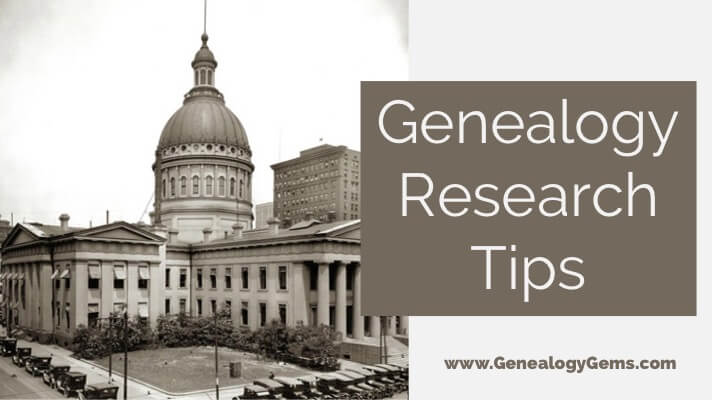
Courthouse research tips for genealogists
3 courthouse research tips for genealogists
Courthouses are one of my favorite places to conduct my genealogy research. Many of our courthouses have a wealth of genealogical records and information.
Courthouses may not have the word “archive” on the building but they are a type of archive. Here are some tips that will help you be successful the next time you are doing genealogy research at a local courthouse.
1. Scout the logistics
Call ahead to find out the days and hours of operation. This is the most important tip I can give anyone about researching in courthouses. In most courthouses, there are different offices for different types of records. Each office has their own phone number and can be contacted concerning hours of operation. Also, ask what days and times are best for a genealogist to visit their office to do research.
Ask about the availability of parking at the courthouse. Many of our courthouse campuses have limited parking for patrons. This problem is often made worse on days when court is in session and many people arrive to participate in court actions. Arriving at the courthouse and ready to do research, you do not want to discover that the only place to park is a block away or at the distant parking garage.
2. Locate records ahead of time
Ask about the availability and location of records. It might be a no-brainer that the deed records will be found in the Register of Deeds office. But are the oldest deed books there–the ones you need? Many times, courthouse offices run out of room for the old records and will transfer them to the county archives, which may not be located in the courthouse. It is important to know what records are available in the office where you wish to do genealogy research. If the older records have been sent to the archives or some other facility, you want to know that before you get to the courthouse.
3. Be patient
Whether you are visiting the courthouse or working with them through phone calls and emails, patience is a key element. As a genealogist, I know the urgency we all feel in trying to locate our ancestor’s records. Many times, we are experiencing great momentum in our genealogy research and we do not want to be hindered in our quest for that one piece of information we are seeking. If you walk into an office and they are very busy, please be patient if the staff member asks you to wait before they can get those old dusty books from the back room. If you have emailed or telephoned an office and they have told you they will get back with you, be patient and wait for that response.
The records that can be found in courthouses can be essential to our genealogy research. Implementing these tips will help you be more successful when doing research at the local courthouse.
Ready to get serious about courthouse research?
Check out this excellent article on researching wills and probate records by Margaret Linford. Her tips will help you understand what’s in these courthouse essentials, where to find them–and what to do with your bored non-researching travel companions!
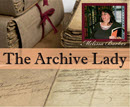
About the Author: Melissa Barker is a Certified Archives Records Manager, the Houston County, Tennessee Archivist and author of the popular blog A Genealogist in the Archives and an advice columnist. She has been researching her own family history for the past 27 years.
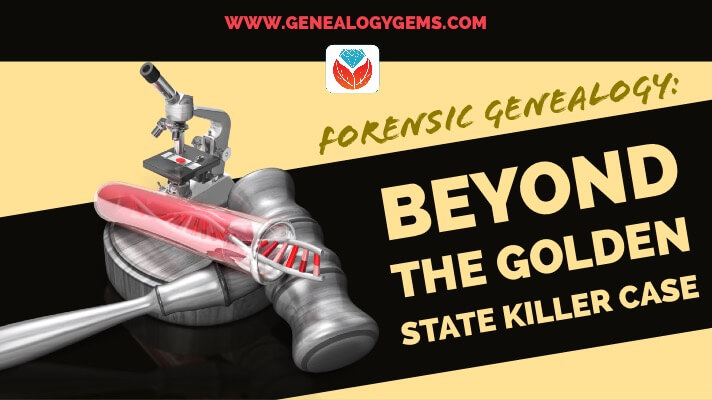
Forensic Genealogy: Beyond the Golden State Killer Case
The Golden State killer DNA-credited arrest was just the beginning. Another cold case—a double murder—has new answers thanks to forensic genealogy research techniques and a company that helps criminal investigators use them. Though legal and privacy questions still remain, Your DNA Guide Diahan Southard points out a technology crime-fighters are refining that may prove beneficial to family historians.
Lisa recently shared with us in the Genealogy Gems Podcast episode 217 her thoughts on the ramifications of the Golden State Killer case, in which a murderer and rapist was arrested nearly 40 years after the crimes were committed, thanks to some excellent genetic genealogy work.
Just three weeks after that discovery made headlines, a police department in Snohomish, WA, announced that they too had employed genetic genealogy to solve a cold case from 1987, when two high-school sweethearts were found murdered. This police department indicated they had assistance from a company called Parabon Nanolabs, a genetics company based in Virginia.
According to their website, Parabon deals in both pharmaceuticals and something they call Snapshot, where they reconstruct the facial features of an individual based on their DNA. While they do have a press release on their website regarding the aforementioned case, they do not have a specific product on their website indicating they can take genetic material and make a DNA profile compatible with genetic genealogy databases (they do mention using “biological evidence” on the Forensics page, shown below). But that is exactly what they must have done in order to solve this case.
Forensic genealogy: Beyond the Golden State Killer
According to an article in The Star, a Toronto newspaper, the police department in Toronto has DNA on the perpetrators for 30 cold cases. It is very likely that every police department is harboring similar evidence. Up until now, either in the US or Canada, investigators have generally only matched DNA profiles from crime scenes to genetic databases of known criminals. These are people who have already been caught and convicted. If no match is found, investigators are back to square one.
In both the Washington state and Golden State Killer case, these men had never been caught, and therefore their DNA was not part of these national databases. The way the DNA evidence was made useful was to compare it with samples from the general population, or in this case, a bunch of genetic genealogists who had uploaded their DNA results to the open-source website, GEDmatch. (Click here to learn more about GEDmatch.)
In the podcast episode, Lisa discussed many of the ethical and moral issues that we need to address as more and more different kinds of uses for our DNA are found, employed, and even commercialized. These are conversations we need to have as a community, and certainly that you need to consider personally.
But like most technology, there are good sides and bad sides to advancements. One of the best upsides I can see out of this is the feat of technology that took a small amount of DNA found at a crime scene 40 years ago and turned it into a DNA profile that can be useful in genetic genealogy databases. For years I have disappointed many genetic genealogists that have letters and stamps and hats from their loved ones who have passed on, and they want a way to obtain their DNA. Well, now we have evidence that it can be done. You can take some genetic material (licked stamps or envelopes, hair with a root, razors, teeth), and use it to create a viable profile that can be used to search genetic genealogy databases!
In fact, LivingDNA is currently openly accepting these kinds of samples, albeit at a hefty price tag, starting at $1,000 or so per sample. (This service is new enough that they don’t even have a landing page for it yet; submit your inquiries through their contact form.)
Now, whether or not the DNA from that stamp, or that stray piece of hair in the hat will be able to produce enough DNA to provide a complete enough DNA profile, still remains to be seen. But I would watch closely companies like Parabon and LivingDNA as they work to develop robust laboratory techniques that will provide answers for all of the genealogists whose parents and grandparents didn’t ever have a chance to spit to record their family history.
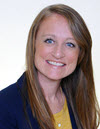
About the Author: Diahan Southard has worked with the Sorenson Molecular Genealogy Foundation, and has been in the genetic genealogy industry since it has been an industry. She holds a degree in Microbiology and her creative side helps her break the science up into delicious bite-sized pieces for you. She’s the author of a full series of DNA guides for genealogists.
Keep up with what DNA can tell you
Stay at the cutting edge of what your DNA (or your relatives’ DNA) can tell you about your family history with Diahan’s Advanced DNA Bundle of quick reference guides, with try-it-now techniques for your DNA test results (click on individual titles to buy them separately or click here to save by bundling them together):
- Gedmatch: A Next Step for Your Autosomal DNA Test. GEDmatch is a third‐party tool for use by genetic genealogists seeking to advance their knowledge of their autosomal DNA test. This guide will navigate through the myriad of options and point out only the best tools for your genetic genealogy research.
- Breaking Down Brick Walls with DNA. With this guide in hand, genealogists will be prepared to take their DNA testing experience to the next level and make new discoveries about their ancestors and heritage. Learn how to leverage the power of known relatives who have tested, explore chromosome browsers, employ a methodology for finding a family tree for a DNA match that does not have a tree, and more.
- Organizing Your DNA Matches. With millions of people in possession of a DNA test, and most with match lists in the thousands, many are wondering how to keep track of all this data and apply it to their family history. This guide provides the foundation for managing DNA matches and correspondence, and for working with forms, spreadsheets, and 3rd party tools.

